Avignon
Top Tourist Attractions in Avignon & Easy Day Trips
An excellent starting point for exploring Provence, the historic city of Avignon awes visitors with its stunning papal palace. A UNESCO World Heritage Site, the Palais de Papes was the residence of seven Popes from 1309 to 1377 and is a testimony to the wealth and power of Christendom during the Middle Ages. However, there are many other important attractions in Avignon, including the Petit Palais where the episcopal bishops once lived, now a museum and UNESCO World Heritage Site.
Avignon is known as a center of art and culture. The city hosts a wide variety of festivals and events throughout the year, from the popular International Jazz Festival and the Epicurean Festival in summer to a traditional Christmas market in December. Visitors can enjoy the relaxing Provençal atmosphere of this small town as they explore the quaint streets, such as the Rue des Teinturiers and elegant squares like the Place des Corps Saints. At the heart of Avignon, the Place de l'Horloge is lined with shady plane trees and filled with cafés where patrons sit and watch the world go by.
1 Palais des Papes
To visit the Palais des Papes is to witness the power of the Papacy during the Middle Ages. In 1309, Pope Clement V moved the papal court from Rome to Avignon, where this palace was built between 1335 and 1352. This imposing palace was the most important monument in Christendom during the 14th century and is the largest building of the Gothic period in the world. From a distance, the palace appears to be a giant fairy-tale castle. Visitors can take a tour of the interior to see the 25 rooms that are open to the public. Although most of the furnishings have disappeared, the interior offers a sense of the vastness of the space. The halls, stairways, bedrooms, and chapels were all built on a grand scale around a central courtyard. Highlights include the Great Audience Hall, an enormous hall embellished with wall paintings; the Grand Tinel banquet room; the Saint Martial and Saint John chapels, decorated with well-preserved frescoes created by the Italian painter Matteo Giovanetti; and the Great Clementine Chapel, a huge single-aisled church where official ceremonies were held. From the Great Chapel, there is an entrance to the loggia where the large traceried Fenêtre de l'Indulgence (Window of Indulgence) offers a view of the Great Courtyard. From this window, the Pope used to give his blessings to the faithful.
2 Musée du Petit Palais
Another UNESCO World Heritage Site, the Petit Palais dates back to the 13th century and was the residence for Avignon's episcopal bishops before Pope Clement V created the Palais des Papes. The building was designed as a Gothic fort and is distinguished by the crenelated outer wall (defensive ramparts), a typical element of medieval architecture. The Petit Palais is now an art museum with excellent collections, including masterpieces of Italian paintings from the 13th to the 15th centuries. The collection includes notable works by Italian painters, including Sandro Botticelli and Louis Brea. The museum's most famous piece is Botticelli's Virgin and Child painting. The museum also displays Avignon sculptures and a collection of works by the Avignon School of Painters. At one time, Napoleon II had purchased the collection for the Louvre Museum. As a benefit for visitors in need of refreshment, the Petit Palais museum has a tea salon with outdoor seating in a quiet courtyard. The tea salon offers a selection of tea, coffee, hot chocolate, and pâtisseries.
3 Pont Saint Bénézet

One of the iconic sites of Avignon, the Saint Bénézet Bridge is a testament to the history of Avignon. There is also an interesting legend associated with it. As the story goes, in the year 1177, the shepherd Bénézet was instructed by angels to build a bridge over the Rhône River. The town's founders and citizens mocked the idea. However, Bénézet was endowed with the strength to raise a giant lump of rock, which the townspeople then recognized as being a sign from God, further evidenced by the fact that the bridge was built in only eight years.
The Saint Bénézet Bridge is a graceful construction of 900 meters and 22 arches. It was an important route for transportation across the Rhône River until the 17th century. The bridge is now in partial ruins and no longer crosses the river. However, the UNESCO-listed site is open to the public as a tourist attraction. The ticket price includes an audio-guide and entrance to the "Le Pont Retrouvé" Museum, which features three-dimensional exhibits, films about research work, and multimedia presentations that offer an interactive experience.
4 Cathédrale Notre-Dame-des-Doms
Although this building pales in comparison to the nearby Palais des Papes, the Cathedral of Notre-Dame des Doms is still worth a visit. This beautiful 12th-century cathedral has a serene Romanesque interior. Upon entering through the main doorway, visitors will notice the remains of frescoes by Simone Martin. Inside the cathedral, there is an inspiring sense of space and intimacy. In the crossing to the left stands a 12th-century bishop's chair of white marble; in the first side chapel on the north is the former Romanesque main altar. The fourth chapel on the south side houses a Late Gothic monument to John XXII. In the Baptistry Chapel, early 15th-century frescoes adorn the walls. The frescoes portray the Baptism of Christ. A silver sculpture of the Scourging of Christ is found in the north aisle. On the cathedral's exterior, a splendid gilded statue of the Virgin crowns the tower with her hands outstretched to welcome the faithful.
5 Eglise Saint-Didier
To the east of the Rue de la République, the main street of the Old Town of Avignon leading south from the Place de l'Horloge, stands the single-aisled Church of Saint-Didier. Built between 1356 and 1359, the Saint-Didier Church exemplifies Provençal Romanesque architecture with its thick stone walls and large nave that gives the impression of an exceptional spaciousness. This church contains one of France's earliest Renaissance works of art, the Way of the Cross, created between 1478 and 1481 by the Italian painter Francesco Laurana. There are also remarkable 14th-century paintings such as the depiction of Christ's Crucifixion. Another noteworthy feature of this church is the Late Gothic pulpit with a flamboyant decoration style.
6 Place de l'Horloge
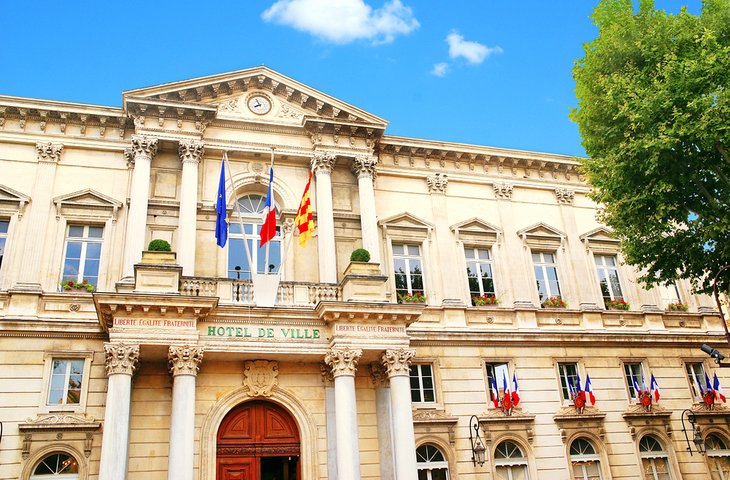
The idyllic Place de l'Horloge is a pleasant place to relax at a street café under the shady plane trees. Near the Palais des Papes, this beautiful square is the very center of Avignon life. On the west side is the theater and the Hôtel de Ville (Town Hall). While the Hôtel de Ville was built in 1845, the building incorporates a charming 14th-century clock tower with life-sized figures on top, known as "jacquemarts," that strike the hours.
7 Rocher des Doms
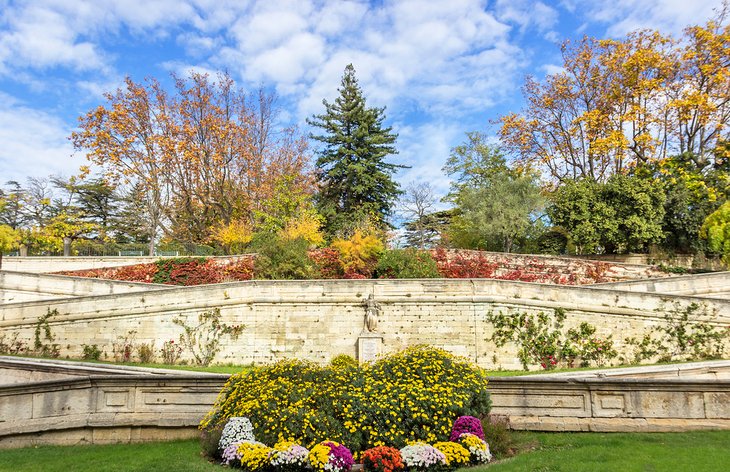
A short walk away from the Palais des Papes, the Rocher des Doms is a rocky promontory that offers an exceptional panoramic view of Avignon. This location has a gorgeous park on its summit, which is a wonderful place for a leisurely stroll. From the gardens, visitors can take in the scenery of the Palais de Papes, the Pont Saint-Bénézet, the Rhône, and the islands of Barthelasse and Piot in the river, as well as the village of Villeneuve-lès-Avignon on the far bank.
8 Eglise Saint-Pierre
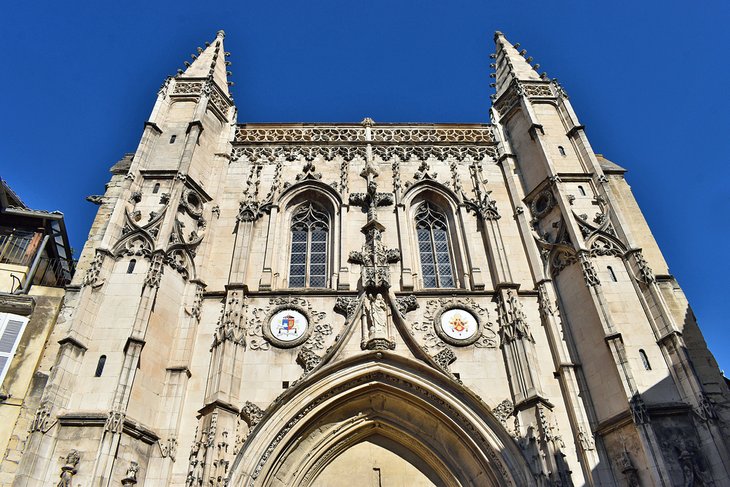
This site was dedicated to Saint Pierre of Luxembourg in the 7th century and the relics of the saint are kept here. Built in 1356, the Church of Saint-Pierre has a beautiful Gothic facade and carved Renaissance wooden doors dating from 1550. The side chapels are 15th-century additions. The church houses several impressive sculptures as well as paintings by Simon de Châlons, Parrocel, and Nicolas Mignard. There are also splendid Baroque choral scenes from the mid-17th century.
9 Avignon Festivals
Avignon is well known for its cultural events and festivals. The city hosts dozens of different festivals throughout the year. One of the most important summertime events in Provence, the Festival d'Avignon is the largest theater festival in the world. Held in June and July, the Festival d'Avignon celebrates the performing arts, with daily presentations of poetry, literature, and philosophy. One of the most well-attended festivals is the Avignon Jazz Festival in August that takes place at the atmospheric Coîttre des Carmes courtyard. This happening event is known as a "launching pad" for up-and-coming jazz musicians from all over Europe. Other noteworthy festivals include the Agricultural Festival in August, the Medieval Festival in September, the Festival of Contemporary Art at the end of September through October, the Blues Festival in October, and a traditional Christmas market from the beginning of December until the celebration of Epiphany in January.
10 Musée Calvet
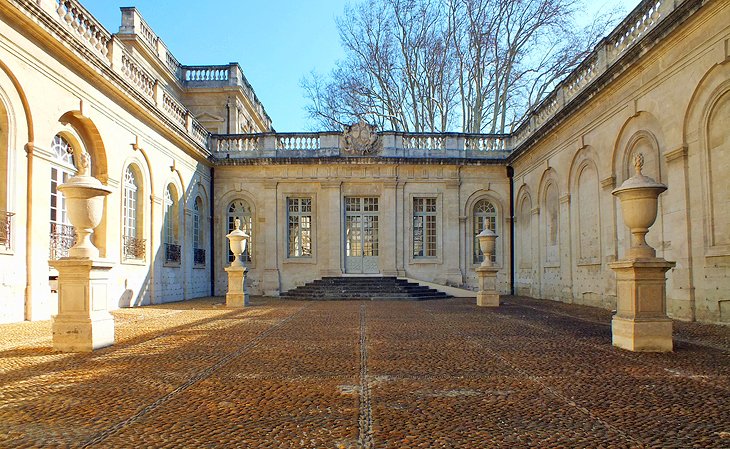
The Musée Calvet has a wonderful collection of antique sculptures, medieval paintings by Provençal masters, Italian paintings from the 16th to 19th centuries, and French paintings from the 16th to the 20th centuries, as well as a selection of Spanish and Dutch works. There is also an interesting display of decorative objects and sculptures. The museum began as the private collection of the doctor, a native of Avignon, Francois Esprit Calvet. Since 1833, the museum has been housed in the 18th-century Hôtel Villeneuve-Martignan near the Place de l'Horloge.
(thanks to: www.planetware.com)
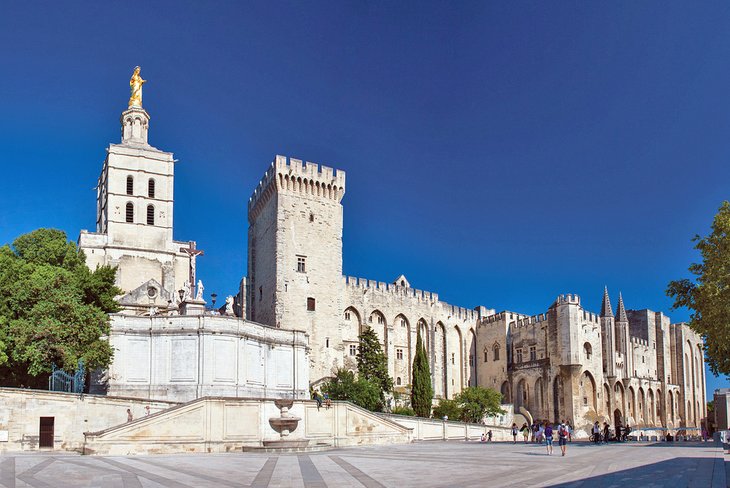
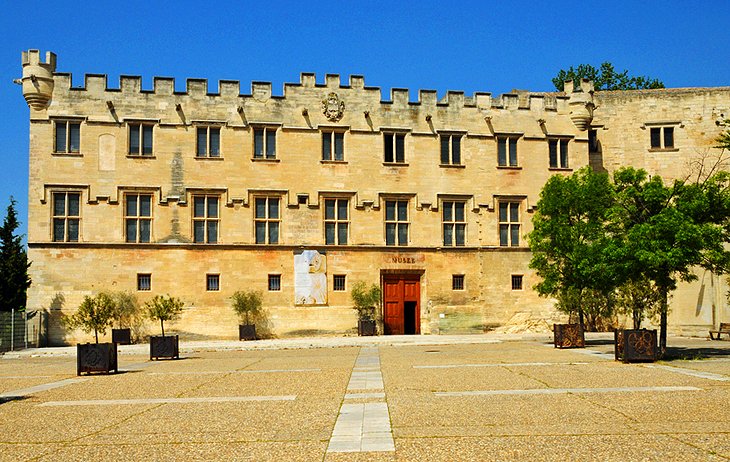
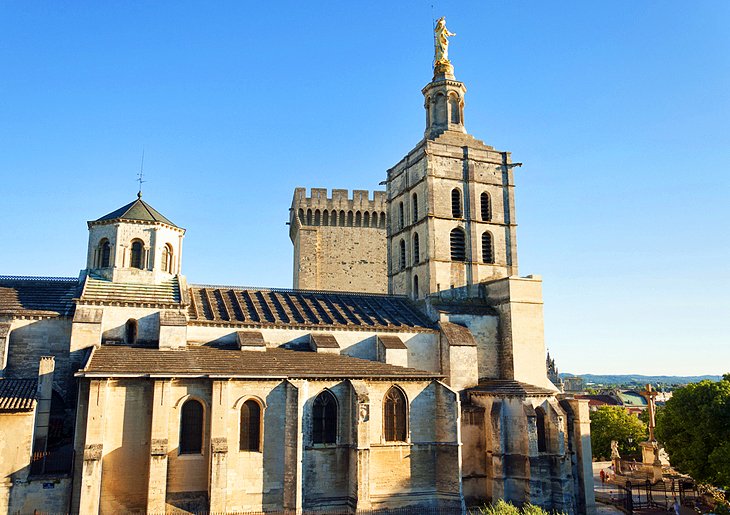
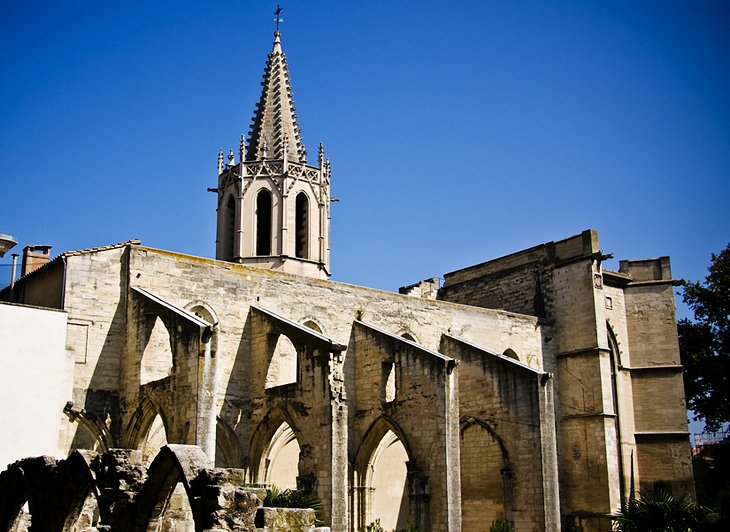
Comments
Post a Comment